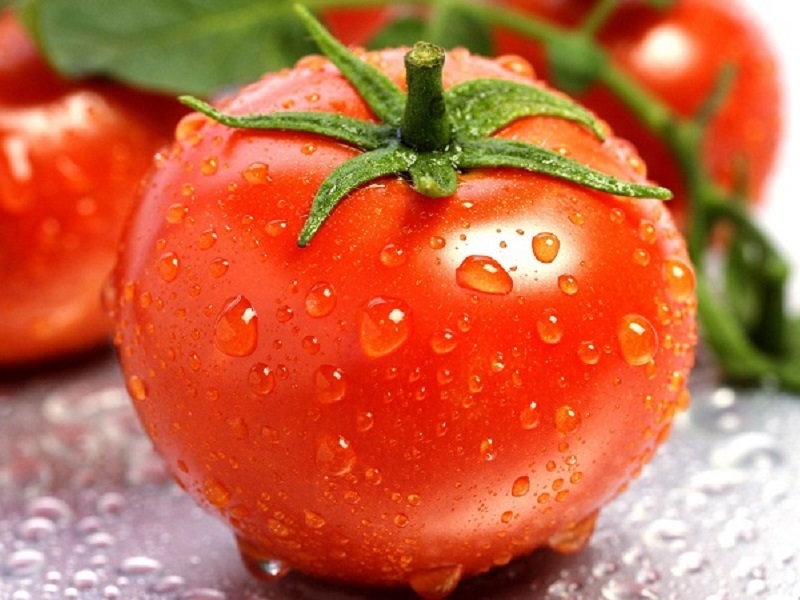


Is tomato a fruit or a vegetable? Almost fifty thousand people google this question each month. Therefore, the answer is worth considering and searching. Fortunately, the Britannica Encyclopedia provides a good answer in a short sentence: tomato is both a fruit and a vegetable. Specifically, we can say that: “tomato is a fruit which is considered to be a vegetable by the nutritionists”.
Some people clam that mango is the most popular fruit in the world because it is widely used in many different countries. People from Asia to America eagerly use mango not just as a sweat dessert but in pickles, ice creams and even in cereals. Since mango is produced more than 43 tones each year in India and China, it is surely the most popular fruit in these countries.
But if you measure the popularity of mango by its amount of production worldwide, you will find out that it is much lower than apples and bananas. But the most popular fruit is neither apple nor banana. Cooked or raw, as a sauce, juice or paste, tomato is extremely popular. With at least two 170 million tons of harvest per year, tomato has won the title of the most popular fruit in the world.
The first people who planted tomato were Mayas and other central American tribes. The Spanish brought tomato from Mexico to their country in 1520. It then was brought to the United States by the British colonists. However, it took a little time for this lovely fruit to be widely used in the United States. During this period, people generally believed that tomatoes were poisonous. But the reality was something else: the noble and the wealthy people served it on delicate lead plates. The acidity of tomato removed the lead from the plates and this caused the death of many nobles. The survivors blamed tomato as the cause of this incident.
As the rumor spread about the dangers of tomatoes, it was difficult to disprove this belief. But that was not the end of the story of tomato. A man called Robert Gibbon Johnson, who lived in New Jersey and grew tomatoes, believed that tomatoes are healthy with no problems. He got the seeds from South America. To show the health of this delicious product and refute the rumors, he started eating tomato in front of many people. When Johnson first plunged his teeth into the tomato, people were shocked, trembled and some people even fainted. But after Johnson’s survival due to this adventure, people started eating tomato safely in America. Since more people started growing and eating tomato, many restaurants added it to their menu.
Thanks a lot Mr. Johnson!
Long before tomato became popular in the United States, it was used in Europe. The Italians started growing tomato around 1550. But what made tomato the centerpiece of Italian recipes had not happened before 1889. And this is the exact time when Rafael Esposito, Naples pizza specialist, was making some food in the honor of Margarita, the queen of Savoy. It is exactly Margarita pizza. What made this pizza so popular was that the ingredients connoted the colors of Italian flag. Since Italy has been a united country just for 28 years, people enthusiastically welcomed it.
The ingredients in Margarita pizza are:
Tomato: symbolizes color red in Italian flag
Mozzarella: symbolizes color white in Italian flag
Basil: symbolizes color white in Italian flag
Of course, it must be noted that it was not Espinosa who invented this food. A similar cuisine was published by Francesco di Bouchard in 1866 but it was Espinosa’s version that brought tomato a special place in Italian cuisine.
As it was mentioned, the Spanish were the first people who brought tomato to Europe. Tomato, which caused the biggest tomato festival in Spain, is enormously favored among the Spanish people. People in Buñol in Valencia prepare to celebrate La Tomatina, the world biggest food-throwing festival, on the last Wednesday on August each year. Due to the extreme popularity of this festival and the maximum presence of 45000 people, La Tomatina is now considered a very great event. To limit the number of people attending this festival, authorities set some rules for selling tickets for the event.
This festival began after a street fight around a vegetable store in Buñol in 1945. It was so appealing to the young people that they brought tomatoes from homes and started throwing to each other next year. The festival uses cheap tomatoes with low-quality flavors. Hence, the participants will not suffer a guilty consciousness because of wasting the food sources.
Tomatoes are so popular in Iran that in addition to using tomato paste as a condiment for most of Iranian dishes, raw tomatoes are even served with cheese and cucumber as breakfast and evening meals.
Tomato was brought to Iran during the reign of one of Qajar kings called King Naser. It was gradually favored by the public so that, nowadays, it is difficult to find an Iranian dish not containing this delicious fruit and its paste. In terms of the production of tomato, Iran is the 7th country in the world.